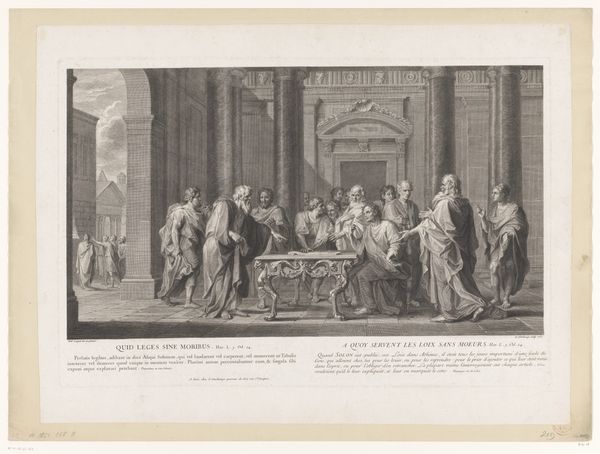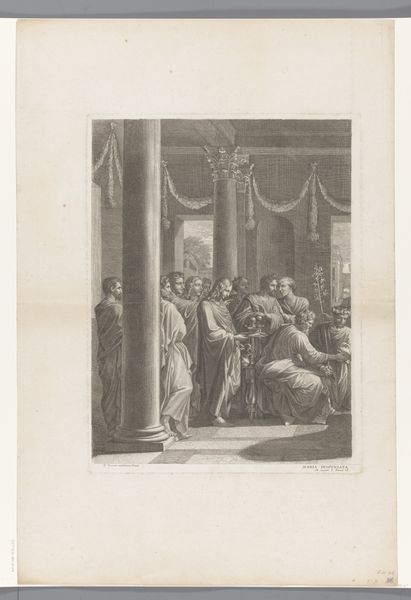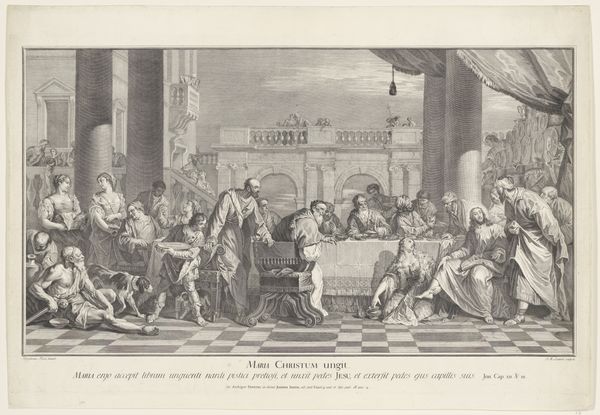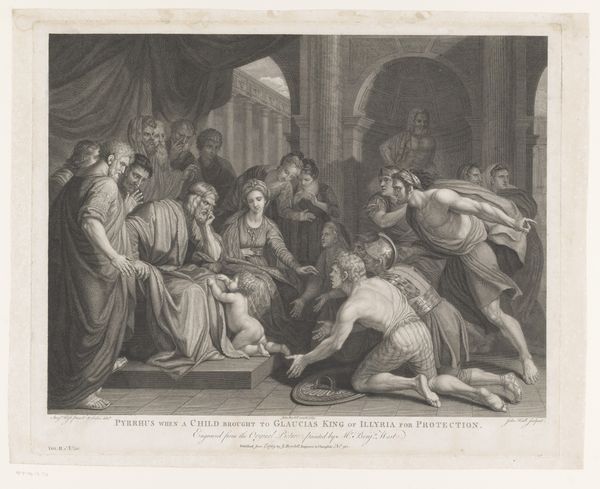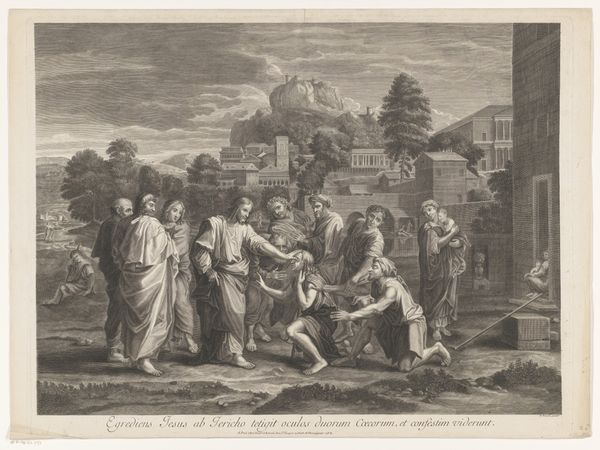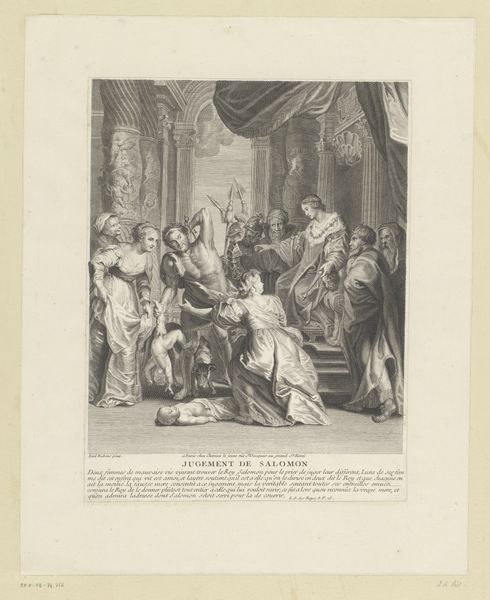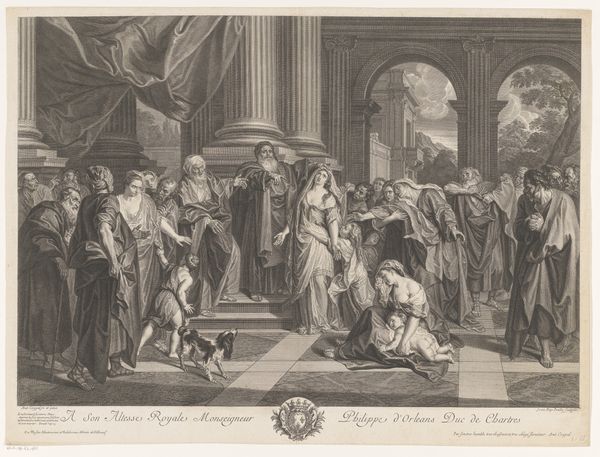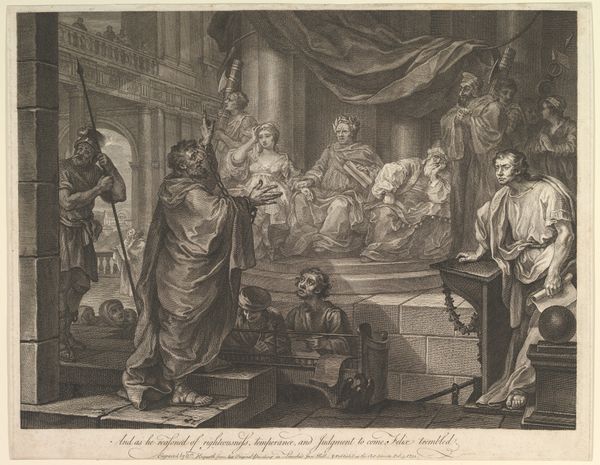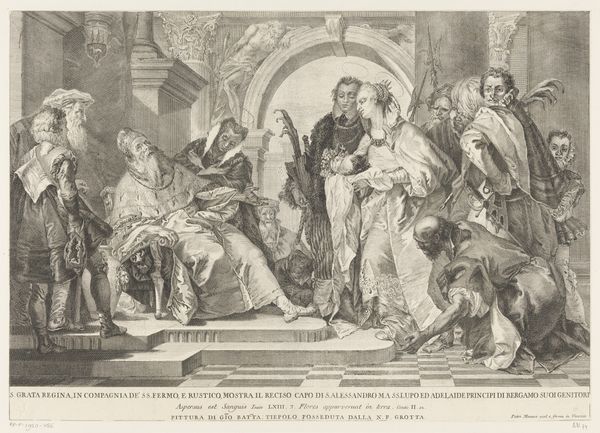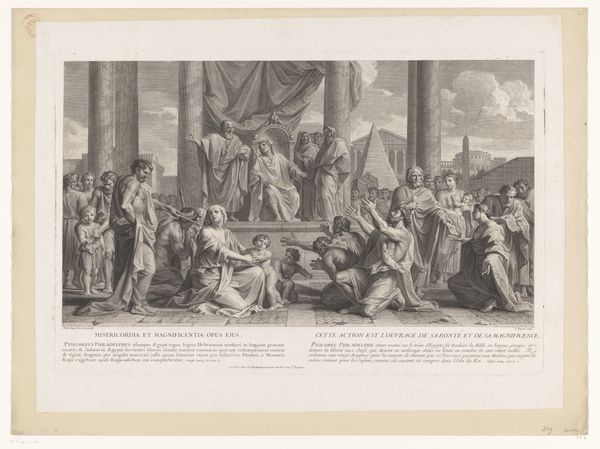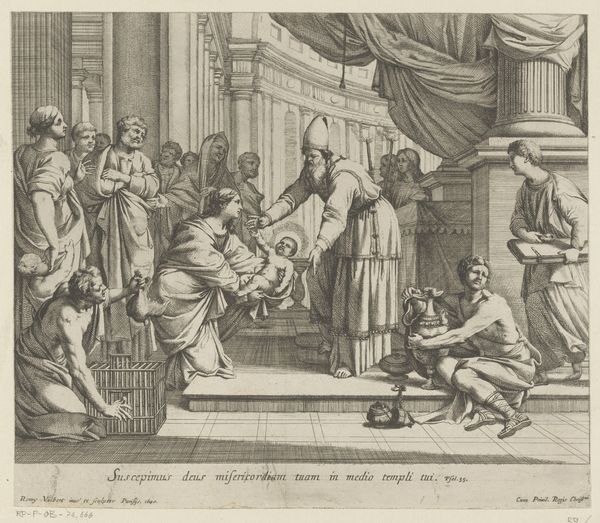
print, engraving
#
narrative-art
#
baroque
# print
#
classical-realism
#
historical photography
#
19th century
#
history-painting
#
academic-art
#
engraving
Dimensions: height 361 mm, width 544 mm
Copyright: Rijks Museum: Open Domain
Editor: So, here we have "Verschillende nationaliteiten op audiëntie bij Trajanus," or "Various Nationalities in Audience with Trajan" by Charles Dupuis, created sometime between 1695 and 1742. It's an engraving, a print. What really strikes me is the detail achieved with this medium. What do you see in this work? Curator: I see a highly formalized depiction of power dynamics, crucially rendered through the reproducible medium of print. Consider the labour involved: the original design, the cutting of the plate, the inking, the printing. Each stage is a site of potential variation and reflects both skill and constraints inherent in the materials and tools. And importantly, think about how that reproductive labour makes power and authority accessible to a broader, less wealthy, public audience than an oil painting. What do you make of the print’s inscription? Editor: The inscriptions…they suggest Trajan’s accessibility. "Facilis ad bonem principem aditus," which I believe translates to “easy access to a good Prince.” Curator: Precisely. It suggests this is intended as propaganda, right? This piece wants to demonstrate a ruler in touch with his subjects. It invites us to ask questions about who the image served and what their access truly meant given prevailing socio-economic relations in its time. Also, think about how an engraving can disseminate such a message wider than painting might… Editor: That makes me consider how prints acted as mass communication back then, reaching diverse audiences that couldn’t afford original artworks. Thank you. Curator: Indeed, examining the means of production here offers rich insights into its message, revealing connections between materials, labour and political ambition. A powerful reminder of the social life of art!
Comments
No comments
Be the first to comment and join the conversation on the ultimate creative platform.

